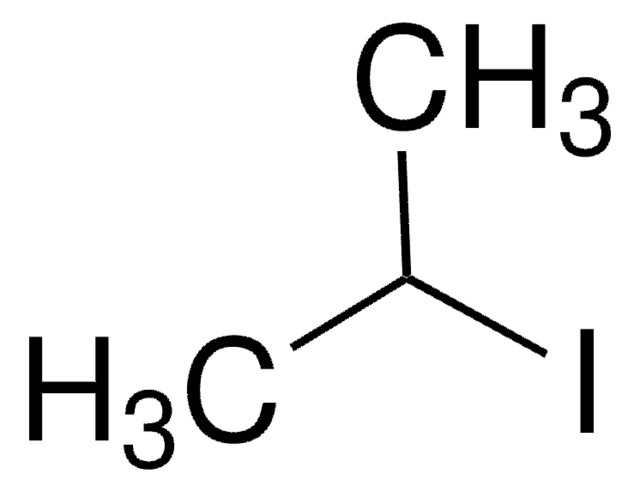X1040
o-Xylene
reagent grade, ≥98.0%
Sinonimo/i:
1,2-Dimethylbenzene
About This Item
16 mmHg ( 37.7 °C)
7 mmHg ( 20 °C)
Prodotti consigliati
Grado
reagent grade
Livello qualitativo
Densità del vapore
3.7 (vs air)
Tensione di vapore
<0.1 atm ( 21.1 °C)
16 mmHg ( 37.7 °C)
7 mmHg ( 20 °C)
Saggio
≥98.0%
Stato
liquid
Temp. autoaccensione
867 °F
Limite di esplosione
7 %
Indice di rifrazione
n20/D 1.505 (lit.)
P. ebollizione
143-145 °C (lit.)
Punto di fusione
-26--23 °C (lit.)
Densità
0.879 g/mL at 20 °C (lit.)
Stringa SMILE
Cc1ccccc1C
InChI
1S/C8H10/c1-7-5-3-4-6-8(7)2/h3-6H,1-2H3
CTQNGGLPUBDAKN-UHFFFAOYSA-N
Cerchi prodotti simili? Visita Guida al confronto tra prodotti
Descrizione generale
Applicazioni
- Phthalic anhydride by oxidation using various catalysts.
- 4-Nitro-o-xylene using fuming nitric acid and polyphosphoric acid in the presence of an acid catalyst.
Avvertenze
Danger
Indicazioni di pericolo
Consigli di prudenza
Classi di pericolo
Acute Tox. 4 Dermal - Acute Tox. 4 Inhalation - Aquatic Chronic 3 - Asp. Tox. 1 - Eye Irrit. 2 - Flam. Liq. 3 - Skin Irrit. 2 - STOT SE 3
Organi bersaglio
Respiratory system
Codice della classe di stoccaggio
3 - Flammable liquids
Classe di pericolosità dell'acqua (WGK)
WGK 2
Punto d’infiammabilità (°F)
89.6 °F - closed cup
Punto d’infiammabilità (°C)
32.0 °C - closed cup
Scegli una delle versioni più recenti:
Possiedi già questo prodotto?
I documenti relativi ai prodotti acquistati recentemente sono disponibili nell’Archivio dei documenti.
I clienti hanno visto anche
Il team dei nostri ricercatori vanta grande esperienza in tutte le aree della ricerca quali Life Science, scienza dei materiali, sintesi chimica, cromatografia, discipline analitiche, ecc..
Contatta l'Assistenza Tecnica.











